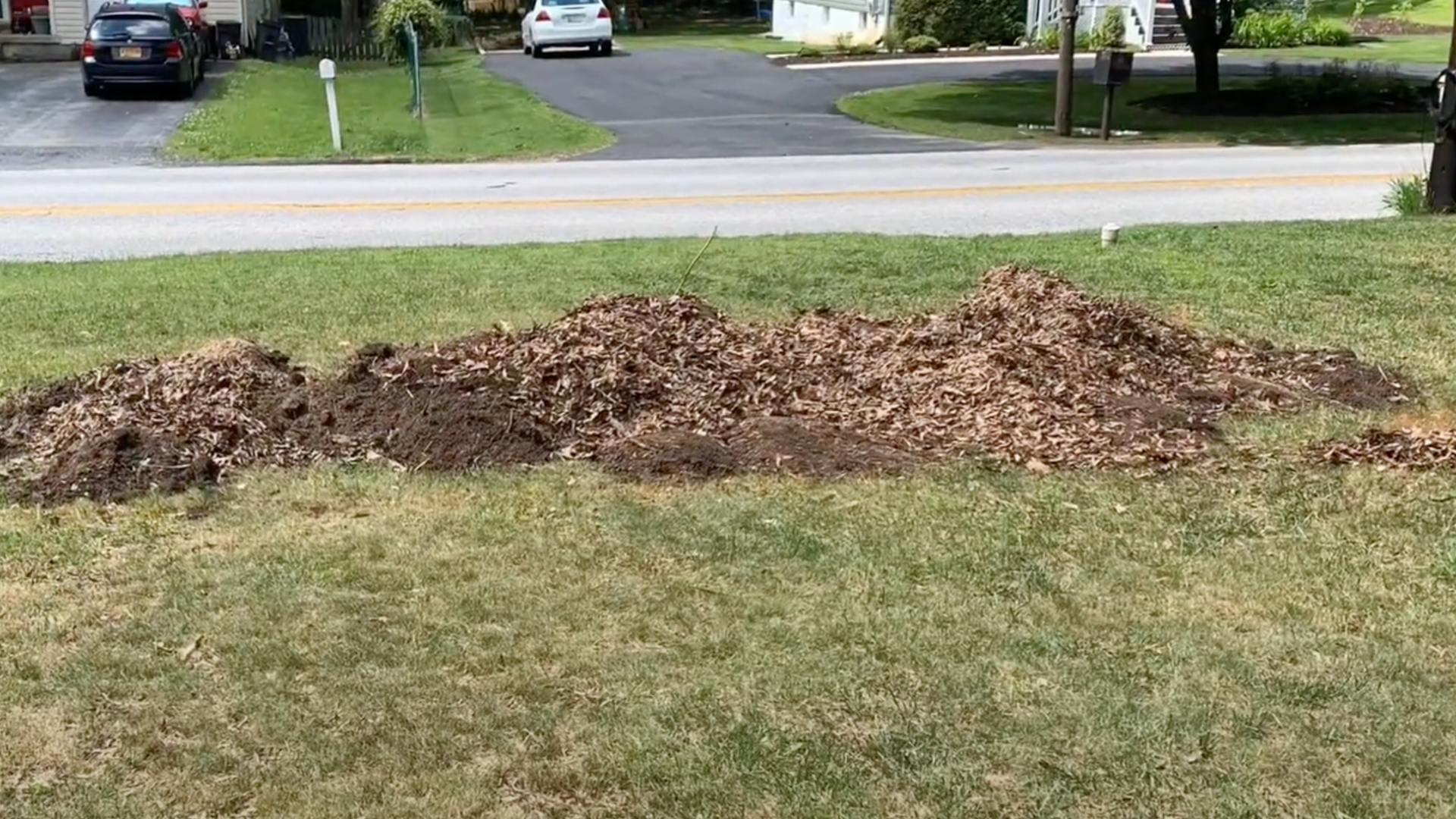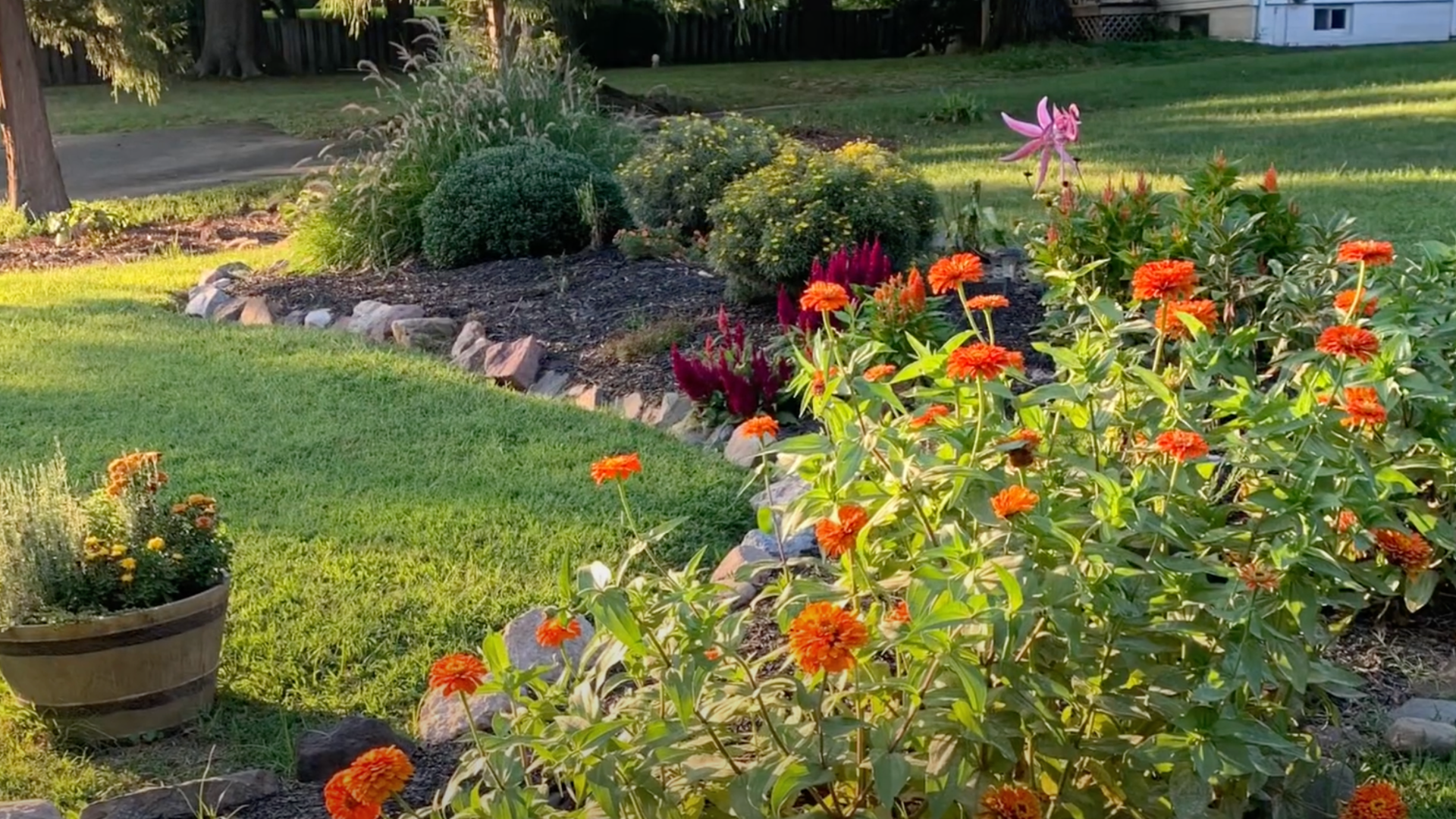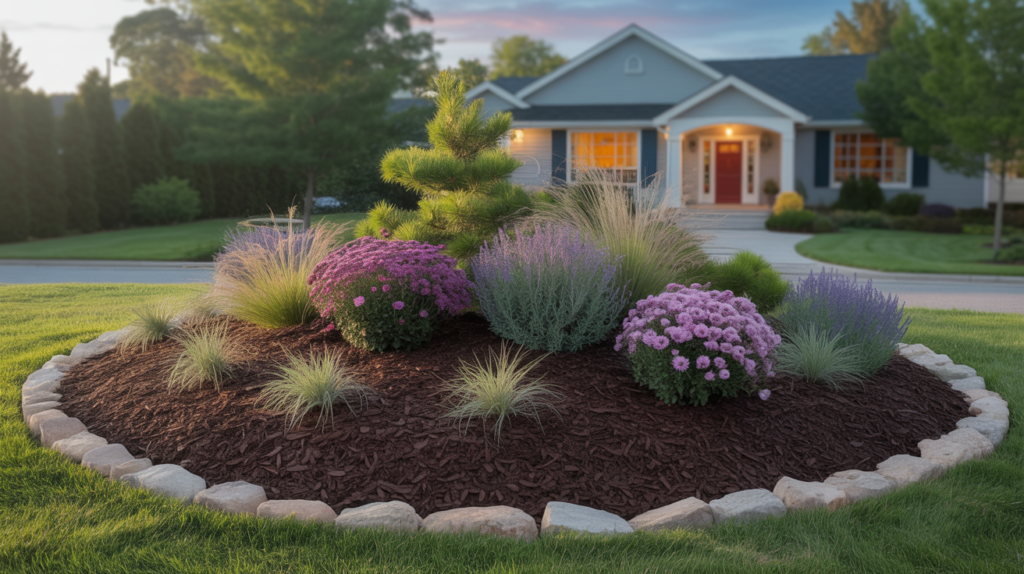Does your front yard feel a little flat or boring? Want more privacy or a way to block out street noise-without spending a ton of money?
Building a landscape berm or mound might be just what you need.
In this article, I’ll show you exactly how to make a front yard berm, step by step. You don’t need fancy tools or a big budget, just a little time, some dirt, and a few helpful tips.
You’ll learn how to shape your berm, what materials to use, how to plant it, and how to finish it off with mulch and edging.
I’ll walk you through the process in a simple way, so you know what to expect and how to get great results.
If you’re looking for an easy, low-cost way to improve your front yard and add some wow factor, you’re in the right place. Let’s get started!
What Is a Landscape Berm and Mound?
A landscape berm or mound is simply a raised area of soil in your yard. Instead of your lawn being totally flat, a berm adds a bit of height and shape.
It can be small or large, wide or narrow, it all depends on your space and what you want it to do.
Berms are great for many reasons. They can make your yard look more interesting, help block traffic noise, and even give you some extra privacy.
Additionally, when you incorporate plants, rocks, or mulch, they transform into beautiful landscape features.
You might also notice that berms help with water flow. They can guide rainwater away from your house or help with drainage in low spots.
The best part? You can build one yourself with basic tools and materials you might already have.
How to Build a Front Yard Landscape Berm and Mound
Let’s walk through each step together so you feel confident from start to finish.
Step 1: Mark the Shape

Start by deciding where you want your berm to be located and what size it should be. Use spray paint to draw the shape right onto your lawn.
It’s okay to get creative! Try a big, curvy shape that looks natural-kind of like a big blob. Walk around it to see how it looks from different angles.
You can always adjust it if it doesn’t look quite right. Don’t stress too much over getting it perfect.
This is your chance to have fun and shape your yard into the one you’ve always wanted. Once it looks good, you’re ready for the next step.
Step 2: Build the Base with Fill Materials

Now it’s time to add height to your berm. You’ll need fill materials to make the mound.
Use anything you already have, such as extra dirt from another project, sandbox sand, old leaves, or even grass clippings.
Try not to spend money here. Many people find free dirt or materials through local online groups. Don’t worry if it looks a little messy right now.
This is just the base, and it doesn’t need to be perfect yet. Focus on getting the shape and size you want.
The more fill you add, the taller and more dramatic your berm will look.
Step 3: Landscape the Berm

Once your berm is built up and shaped, it’s time to bring it to life with plants. Choose a mix of flowers, grasses, and small shrubs to give it texture and color.
Try using plants like mums, decorative grasses, or even a rhododendron. Select plants that thrive in your area and that you enjoy looking at.
After planting, spread mulch around the plants. This helps retain water, keeps weeds out, and gives your berm a neat, finished appearance.
Mulch might be your only significant cost in this project, so choose something that looks nice and lasts.
Step 4: Add a Rock Edge

Adding a border helps your berm stand out and keeps the soil and mulch in place. One of the best (and cheapest) ways to do this is by using large rocks.
You can often find them for free from online marketplaces or by asking around. Place the rocks around the base of your berm in a natural-looking line.
It doesn’t have to be perfect, just enough to frame the space and give it some definition.
The rocks also help the berm look more like a planned part of your yard instead of a random pile of dirt.
Step 5: Watch the Results Grow Over Time

At first, your berm may not look particularly impressive. It could even look a little strange or unfinished.
But give it time! As the plants grow and settle in, the berm will start to blend in with your yard and look more natural.
After a year, it can become one of the prettiest parts of your front yard. That’s what happened in the DIY project this guide is based on.
What started out as a rough-looking mound turned into a peaceful, eye-catching garden area. Be patient; you’ll be surprised at how much it transforms over time.
Want to see how it’s done? Watch this video from @BoHoModBlog It shows each step clearly, so you can follow along and see how a front yard berm is built from start to finish.
Tips to Make Your Berm a Success
Building a berm isn’t hard, but a few simple tricks can make a big difference. These tips will help your berm stand out for all the right reasons:
- Keep the slope gentle: A soft incline looks more natural and makes planting much easier.
- Start small: If you’re unsure about size, begin modestly; you can always add more soil later.
- Use what you already have: Ask around for extra soil, rocks, or mulch before heading to the store.
- Select low-maintenance, local plants: Choose greenery that thrives in your region and requires minimal care.
- Mix plant heights: Combine tall and short plants for visual interest and all-around appeal.
- Water well and monitor: Keep your plants hydrated and check in regularly as they adjust.
With just a bit of planning and care, your berm will soon bloom into a beautiful, functional part of your landscape.
Front Yard Landscape Berms and Mounds Ideas

Not sure how to style your berm? Here are some simple ideas to help you get inspired:
- Flower Garden Berm: Use colorful flowers like mums, daisies, and lavender for a cheerful look.
- Privacy Berm: Add tall shrubs or small trees to help block the view from the street.
- Low-Maintenance Mound: Use mulch, rocks, and drought-friendly plants like succulents or ornamental grasses.
- Tree-Based Berm: Build a soft mound around an existing tree and add plants or ground cover around it.
- Natural Rock Garden: Use large stones or boulders and mix in greenery for a mountain-inspired feel.
- Curved or Blob Shapes: These look more natural than straight lines and blend better with most yards.
- Mix Tall and Short Plants: This adds depth and makes your berm more interesting from every angle.
Conclusion
I used to think landscaping projects had to be expensive or hard, but building a berm showed me that simple changes can make a big difference.
If your front yard feels flat or boring, adding a mound is an easy way to give it shape, color, and even a little privacy.
You don’t need special tools or a big budget didn’t. I used free fill dirt, plants I already had, and rocks I found online.
It took some time, but the results were totally worth it.
Now, my yard looks more alive and interesting, and I get compliments all the time. If you follow the steps in this guide and have a little patience, I know you can do it too.
So give it a try! Start with a small mound, use what you have, and have fun watching your yard change. You’ll be glad you did, I definitely was!

